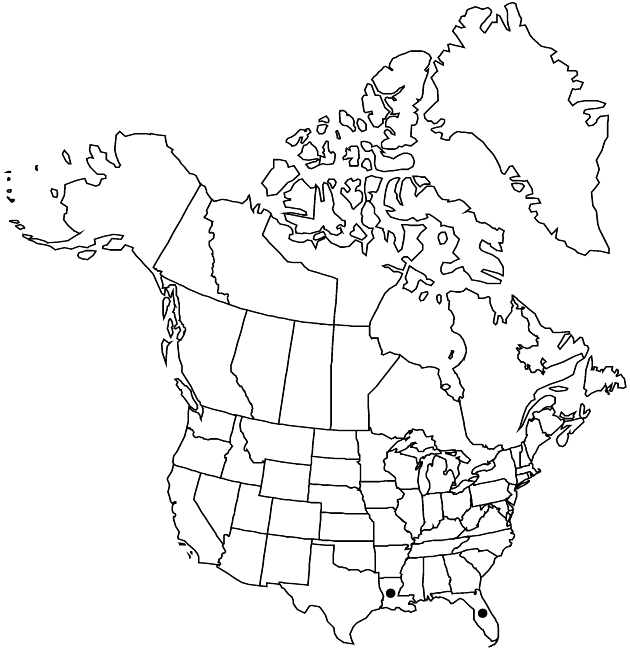Tithonia rotundifolia
Contr. Gray Herb. 52: 41. 1917.
Annuals, mostly 100–200(–400) cm. Leaves: petioles 3–8 cm; blades ± deltate to pentagonal, 7–38 × 7–30 cm, sometimes 3- or 5-lobed, abaxial faces glabrous or soft-pubescent. Peduncles 11–27 cm. Phyllaries 14–21 in (2–)3 series, lanceolate to linear; outer 17–30 × 4–7.5 mm, apices acute, abaxial faces usually densely puberulent; inner 16–28 × 5–8 mm, apices rounded to acute, abaxial faces usually densely puberulent. Paleae 11.5–15 × 2–3 mm, mucros 2.5–5.5 mm. Ray florets 8–13; corollas usually orange, sometimes yellow, laminae oval to oblong, 20–33 × 6–17 mm. Disc florets 60–90. Cypselae 5–7. 2n = 34.
Phenology: Flowering Nov.
Habitat: –Jan. Disturbed sites
Elevation: 0–20+ m
Distribution

Introduced; Fla., La., Mexico, West Indies, Central America.
Discussion
Tithonia rotundifolia is widely cultivated in warm climates and may persist after plantings (e.g., in Asia).
Selected References
None.